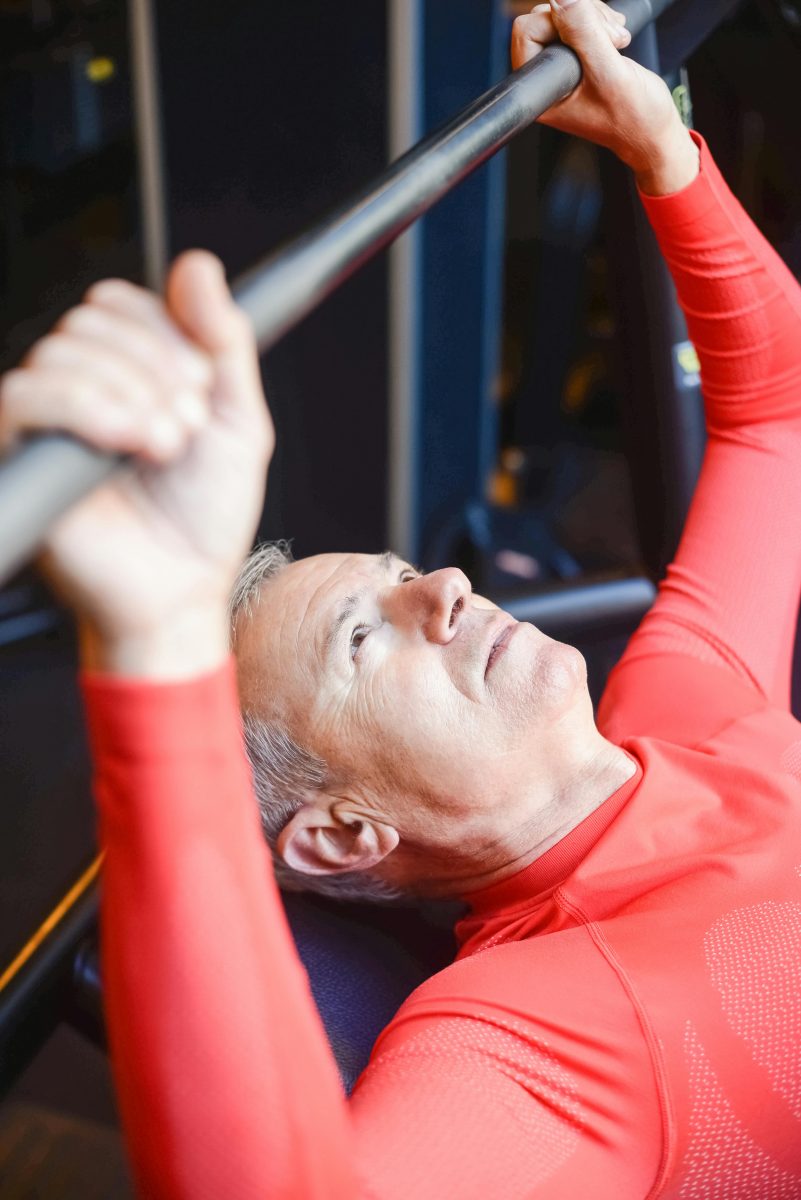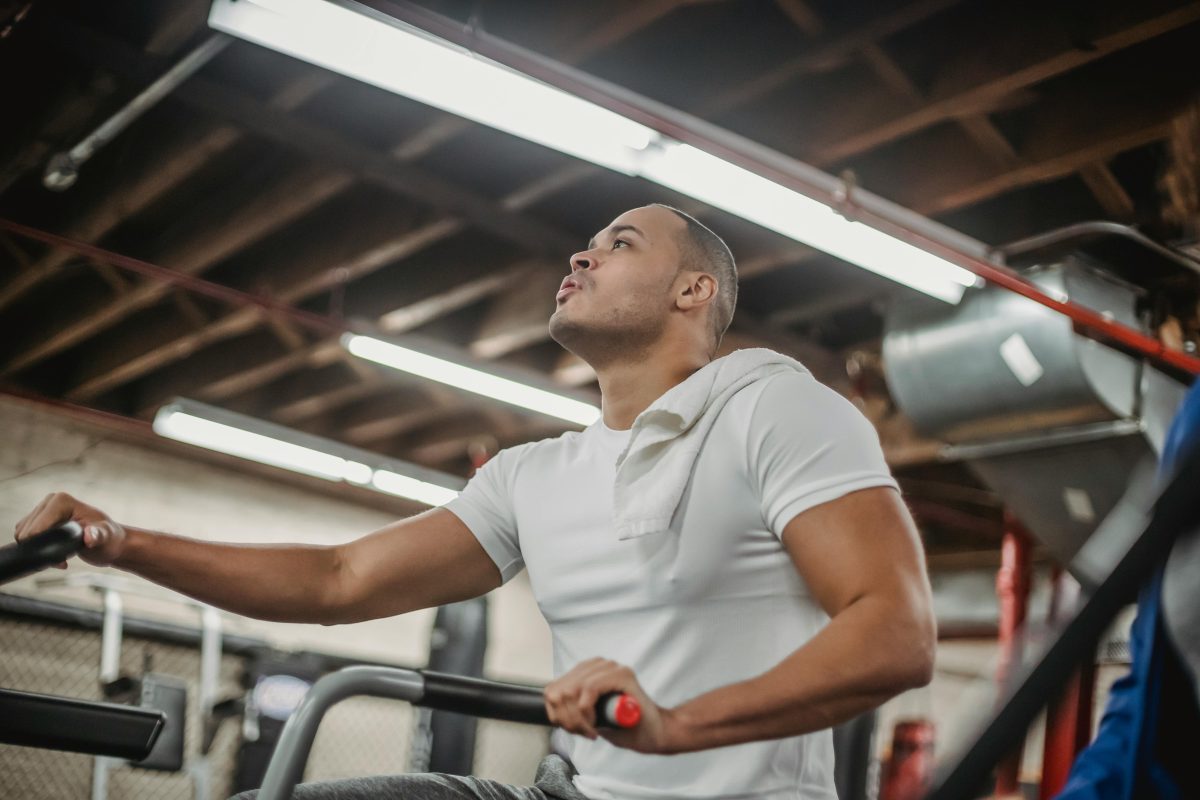Last Updated on: 14th July 2024, 09:33 am
Introduction to Strength Training for Cyclists

Strength training plays a pivotal role in cycling, a fact often overshadowed by the emphasis on endurance and cardiovascular fitness. Yet, integrating strength workouts into a cyclist’s regimen can significantly enhance performance, efficiency, and resilience on the bike. Despite common misconceptions, strength training does not necessarily lead to bulkiness or reduced cycling efficiency. Instead, it equips cyclists with the power and stamina needed to conquer challenging terrains and improve overall speed.
- Improved muscle endurance and increased power output, allowing for more forceful pedal strokes over extended periods.
- Bolsters core stability, ensuring better bike control and reduced fatigue on long rides.
- Crucial role in injury prevention, fortifying the muscles and joints against the repetitive strain cycling can impose.
Embracing strength training can transform a cyclist’s performance, making it an indispensable part of a comprehensive training plan. By dispelling myths and focusing on the specific advantages it offers, cyclists can unlock new levels of potential and achieve greater feats on their bikes.
The Science Behind Strength Training and Cycling Performance

How Strength Training Improves Cycling Efficiency
Strength training elevates cycling efficiency by enhancing the cyclist’s ability to produce more power with each pedal stroke. This increase in power output means cyclists can maintain higher speeds for longer durations, with less perceived effort. The secret lies in the development of fast-twitch muscle fibers, which are crucial for short bursts of power and speed. By incorporating strength training, cyclists can tap into these fibers more effectively, making every pedal stroke count.
The Role of Muscle Power in Endurance Cycling
Endurance cycling isn’t just about lasting longer; it’s about maintaining a competitive edge through sustained power output. Muscle power, honed through targeted strength exercises, becomes the cyclist’s ally in achieving this. It allows for more efficient energy use throughout long rides, ensuring that the cyclist’s performance does not wane as the miles add up. This sustained power is particularly beneficial when tackling climbs or accelerating out of corners, where a well-timed burst can make all the difference.
Impact on Injury Prevention and Recovery
Strength training is not only about enhancing performance; it’s also a critical component in reducing the risk of injury and aiding in recovery. By strengthening the muscles and connective tissues surrounding the joints, cyclists can protect themselves against the common overuse injuries that plague the sport. Furthermore, a stronger body recovers faster, meaning less downtime and more time on the bike. Strength training, therefore, becomes a shield and a catalyst for continuous cycling success.
Essential Strength Training Exercises for Cyclists

Core Strengthening Exercises for Better Posture and Power
- Planks, Russian twists, and bicycle crunches not only enhance stability but also empower cyclists to maintain optimal form, even during the most challenging rides.
- A fortified core translates into better power transfer from the body to the bike, ensuring every pedal stroke is maximally effective.
Lower Body Workouts to Increase Pedal Power
- Squats, lunges, and deadlifts are pivotal for building the leg muscles responsible for pedal power.
- These exercises target the quadriceps, hamstrings, and glutes, which are the primary drivers in cycling.
Upper Body Exercises for Improved Bike Handling and Stability
- Exercises such as push-ups, pull-ups, and rows improve upper body strength, which is essential for better bike handling, especially on uneven terrains and during long descents.
- A strong upper body also aids in maintaining a comfortable riding position, reducing fatigue, and allowing for longer, more enjoyable rides.
Integrating Strength Training into Your Cycling Routine

Balancing Strength Training with Cycling Workouts
Integrating strength training into your cycling routine requires a delicate balance. It’s about finding harmony between the bike and the weights, ensuring one complements the other. Start with two strength sessions a week, focusing on major muscle groups used in cycling. This balance prevents overtraining, allowing your body to adapt and grow stronger without sacrificing time in the saddle.
Periodization: Timing Your Strength Training for Peak Performance
Periodization is your roadmap to peak performance. It involves structuring your training into phases, each with a specific focus. Early in the season, concentrate on building a strength foundation with heavier weights and lower repetitions. As your key races approach, shift towards maintenance with lighter weights and higher reps. This strategic timing ensures you’re strong, not fatigued, on race day.
Recovery: The Key to Effective Training Synergy
- Prioritize rest days and consider active recovery, like light cycling or yoga, to enhance flexibility and blood flow.
- Nutrition also plays a crucial role, with protein and carbohydrates helping to repair and fuel your muscles.
By thoughtfully integrating strength training into your cycling routine, focusing on periodization, and prioritizing recovery, you create a powerful synergy. This approach not only boosts your cycling performance but also builds a more resilient, well-rounded athlete. Embrace the journey of balancing these elements, and the rewards will be evident in every pedal stroke.
Nutrition and Hydration: Fueling Strength and Endurance on the Bike

Nutritional Needs for Cyclists Undergoing Strength Training
For cyclists incorporating strength training, nutrition is a cornerstone of success. A balanced intake of proteins, carbohydrates, and fats fuels both endurance and muscle growth. Proteins are crucial for muscle repair and growth, making them essential after strength sessions. Carbohydrates, on the other hand, replenish glycogen stores, ensuring energy levels are optimal for both cycling and strength workouts. Healthy fats support overall health, including joint mobility and inflammation control. This nutritional trio, when timed correctly, can significantly enhance a cyclist’s performance and recovery.
Importance of Hydration in Performance and Recovery
Hydration is another critical piece of the puzzle. Water supports every metabolic function and nutrient transfer in the body, making it indispensable for cyclists. Adequate hydration optimizes performance, aids in digestion, and facilitates recovery by helping to transport nutrients to muscles. Electrolyte balance, maintained through hydration, is vital during long rides or intense training sessions, preventing cramps and fatigue. Thus, cyclists should prioritize not just fluid intake but also electrolyte replenishment, especially during and after strenuous activities.
Supplements: Are They Necessary for Cyclists?
While a well-planned diet should cover most nutritional needs, certain supplements can offer benefits. For instance, whey protein facilitates quick muscle recovery, while BCAAs (branched-chain amino acids) can help reduce muscle soreness. Creatine, known for its benefits in high-intensity training, might also be advantageous for cyclists looking to improve short burst power outputs, like sprints. However, supplements should never replace whole foods but rather complement a balanced diet. Always consult with a healthcare professional before introducing any supplements into your routine.
Integrating strength training into a cyclist’s regimen demands a nuanced approach to nutrition and hydration. By focusing on these elements, cyclists can maximize their training outcomes, ensuring they’re as strong on the bike as they are in the gym. Remember, the key to unlocking your full potential lies not just in how you train, but also in how you fuel and recover.
Overcoming Common Challenges in Strength Training for Cyclists

Addressing Time Constraints: Efficient Workouts for Busy Schedules
- Time-crunched cyclists can still reap the benefits of strength training with high-intensity, circuit-based workouts.
- By combining exercises that target multiple muscle groups, you can create a routine that’s both time-efficient and effective.
- For instance, a 30-minute session that rotates through squats, deadlifts, and planks minimizes downtime and maximizes results.
- This approach ensures that even the busiest riders can fit strength training into their schedules, enhancing their cycling performance without compromising their daily commitments.
Dealing with Motivation: Setting Realistic Goals and Tracking Progress
- Motivation ebbs and flows, but setting achievable goals can keep you on track.
- Start with small, specific objectives, like increasing your squat weight by 10% or holding a plank 30 seconds longer.
- Documenting your progress is equally important; it provides tangible evidence of your improvements and fuels your drive to continue.
- Whether through a training log or an app, seeing your strength gains over time can be a powerful motivator, pushing you to stay consistent and committed to your training.
Injury Prevention: Recognizing Signs of Overtraining and How to Avoid It
- Overtraining is a real risk, but it’s preventable. Listen to your body and be mindful of warning signs like persistent soreness, fatigue, or decreased performance.
- Incorporating rest days and varying your workouts can help prevent overuse injuries.
- Additionally, focusing on proper form and technique during exercises is crucial; it not only enhances the effectiveness of your strength training but also reduces the likelihood of injury.
- By staying vigilant and adopting a balanced approach, you can maintain a healthy, injury-free strength training regimen that complements your cycling.
In Closing
Strength training is a cyclist’s secret weapon. It builds resilience and enhances joy in every ride. By striking a balance between rigorous strength exercises and dedicated cycling training, cyclists forge a path to superior performance and injury prevention. This journey, marked by improved efficiency, power, and endurance, underscores the transformative power of integrating strength training into a cyclist’s routine. Let this be a call to action for cyclists to embrace strength training, unlocking their full potential on and off the bike.
Strength Training for Cyclists FAQs
Strength training can lead to muscle gain, which might reflect as weight gain on the scale; however, this increase in muscle mass can actually enhance cycling performance by improving power-to-weight ratio. The key is to focus on functional strength training that aligns with cycling goals, rather than purely aiming for muscle mass increase. Proper nutrition and balancing strength with endurance training ensure that any weight gain is beneficial muscle, not fat, supporting rather than hindering cycling performance.
Balancing strength and cycling training involves scheduling strength workouts on the same day as lighter cycling sessions or on rest days to ensure there’s adequate recovery time. Prioritizing strength training during the off-season or early in the training cycle, and then maintaining strength with less frequent sessions during peak cycling periods, can help manage fatigue. It’s also important to adjust the volume and intensity of both types of training to avoid overtraining and ensure progressive adaptation.
Strength training can initially increase recovery times as the body adapts to the added workload, but over time, it can actually lead to improved recovery due to stronger muscles and better overall fitness. By enhancing muscle resilience and efficiency, cyclists may find they can handle higher volumes of cycling training with less fatigue. Properly planned strength training, including adequate rest and recovery techniques, is crucial to prevent overtraining and ensure the benefits are realized.
Strength training enhances cycling performance by increasing muscular strength and endurance, which allows for more powerful pedal strokes and improved fatigue resistance. It targets key muscle groups used in cycling, such as the quadriceps, hamstrings, glutes, and core, leading to better overall stability and efficiency on the bike. This improvement in muscle function can translate to faster climbing, sprinting, and a higher power output during rides.
Cyclists should aim to incorporate strength training into their routine 2-3 times per week, focusing on non-consecutive days to allow for adequate recovery. This frequency is optimal for building strength without compromising endurance training or on-bike performance. Adjustments may be necessary based on the cycling season and individual training goals, with a possible reduction in strength training intensity or frequency during peak cycling periods.
While cycling primarily engages the lower body, upper body strength is important for maintaining proper riding form and handling the bike effectively, especially during long rides or when navigating technical terrain. Strengthening the arms, shoulders, and core helps support the body on the bike, reducing the risk of fatigue and injury. It also enhances control and power transfer, contributing to a more efficient and balanced ride.
Cyclists should generally focus on low to moderate weight with higher repetitions to build muscular endurance without excessively increasing muscle mass. This approach enhances the muscles’ ability to perform repeated contractions over time, which is more relevant to cycling performance. However, incorporating some phases of high weight and low reps can be beneficial for building maximal strength, especially in the off-season.
Squats, deadlifts, lunges, and leg presses are among the best exercises for cyclists, as they closely mimic the cycling motion and target the major leg muscles used in biking. Incorporating core exercises like planks and exercises for the back and shoulders can also improve posture and efficiency on the bike. These exercises not only build strength and power but also help in injury prevention by ensuring a balanced development of muscle groups.
Neglecting strength training can lead to imbalances and weaknesses that increase the risk of injury and limit cycling performance. Without strength training, cyclists might experience reduced power output, endurance, and efficiency, as well as a higher likelihood of overuse injuries due to the repetitive nature of cycling. Incorporating strength training helps ensure a well-rounded fitness profile, supporting long-term development and injury prevention in the sport.
Core strength plays a crucial role in cycling by providing stability, improving posture, and allowing for more efficient power transfer from the legs to the pedals. A strong core reduces the workload on the legs by stabilizing the torso, which can improve endurance and reduce the risk of lower back pain. Exercises targeting the abs, obliques, and lower back are essential for building a solid core that supports cycling performance.
Orlando is a all round athlete from Australia, now resident in Germany. His sports of passion of American Football(Offensive line), weight training and indoor rock climbing where he uses his 195cm wing span to his advantage.



